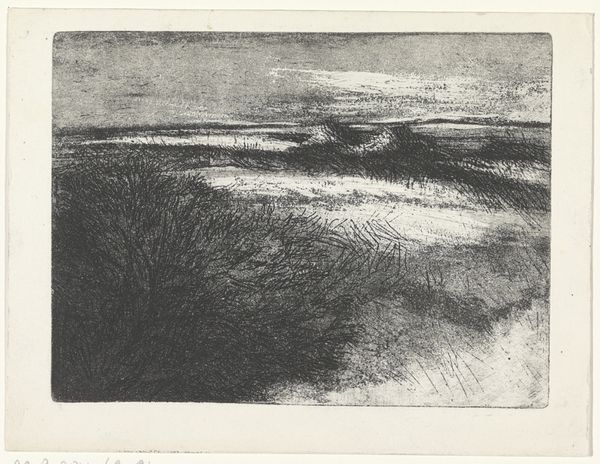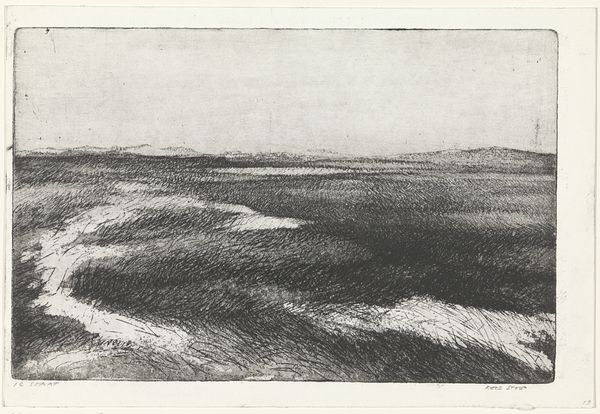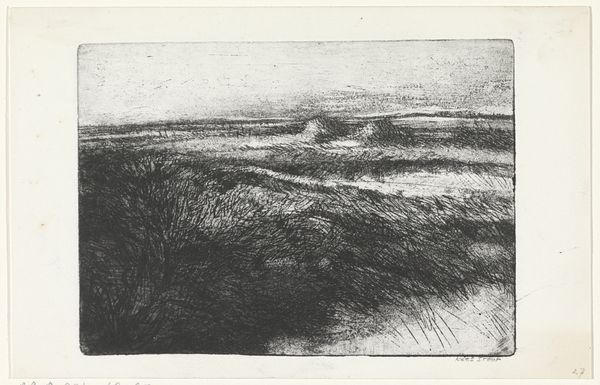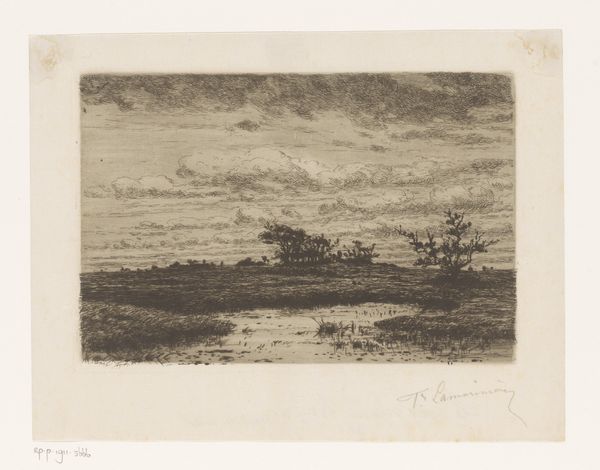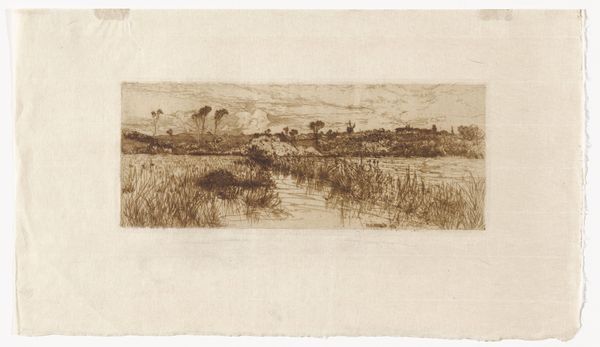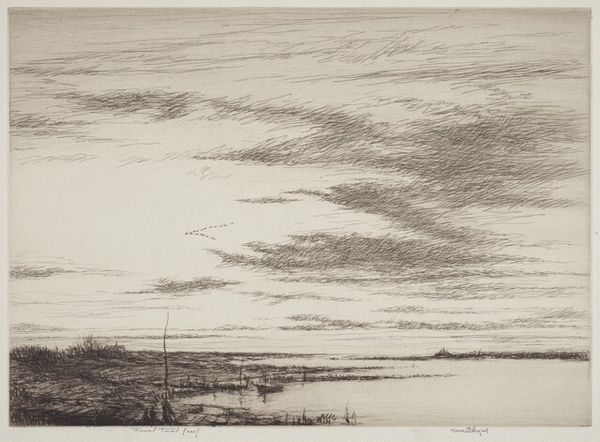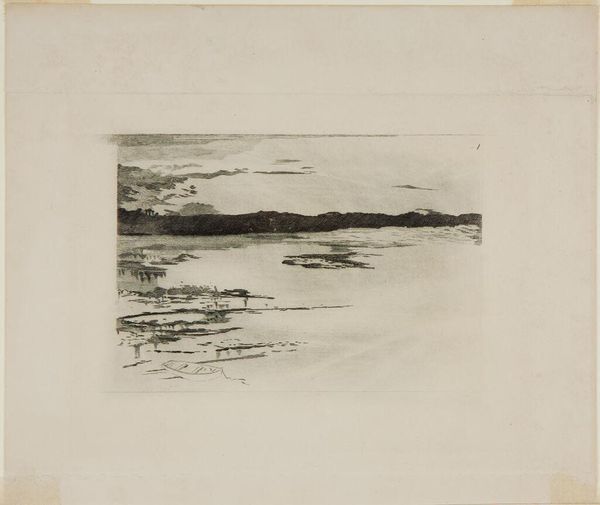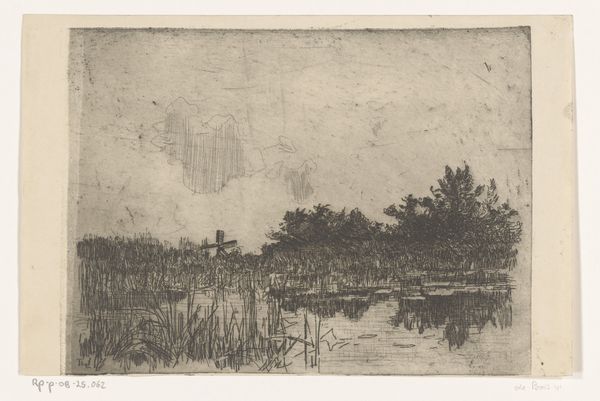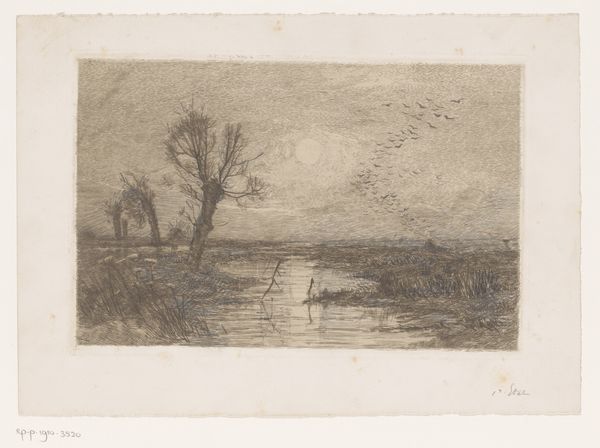
print, etching
#
dutch-golden-age
# print
#
etching
#
landscape
#
monochrome
Dimensions: height 231 mm, width 294 mm
Copyright: Rijks Museum: Open Domain
Editor: Here we have Simon Moulijn’s “Vlak landschap met ven,” a 1924 etching, currently held at the Rijksmuseum. The monochrome image and tight crop create a sort of contained stillness; it makes me wonder about Dutch identity in the interwar period. What story does it tell? Curator: This work resonates deeply with the interwar period’s socio-political landscape, echoing a yearning for stability. How might the flatness you observed in the composition serve as a visual metaphor? Editor: Perhaps, this simplicity and flatness speaks to a collective desire for calm after the turmoil of World War One. It certainly resists grandeur. Curator: Precisely. It shies away from overtly nationalistic or heroic narratives common in earlier landscape painting. Think about the role of institutions like the Rijksmuseum in shaping national identity: does Moulijn’s work reinforce or subvert these expectations? Editor: That's a good point. Displaying such a humble landscape probably served to democratize ideas around Dutch pride and belonging. It pictures somewhere any person might find. Curator: And consider the medium – printmaking made the artwork accessible to wider audiences. Does this suggest a shift towards more democratic artistic practices in the Netherlands during this time? Editor: Yes, the relatively inexpensive nature of printmaking allowed more people to own art, shifting away from the patronage of the wealthy elite that had dominated the art world. It’s a small piece, but speaks volumes about the democratization of culture! Curator: Indeed. It serves as a potent reminder that even seemingly quiet landscapes can be deeply intertwined with broader social and political currents. Editor: I now see the picture as actively reshaping Dutch national identity! Thanks!
Comments
No comments
Be the first to comment and join the conversation on the ultimate creative platform.
